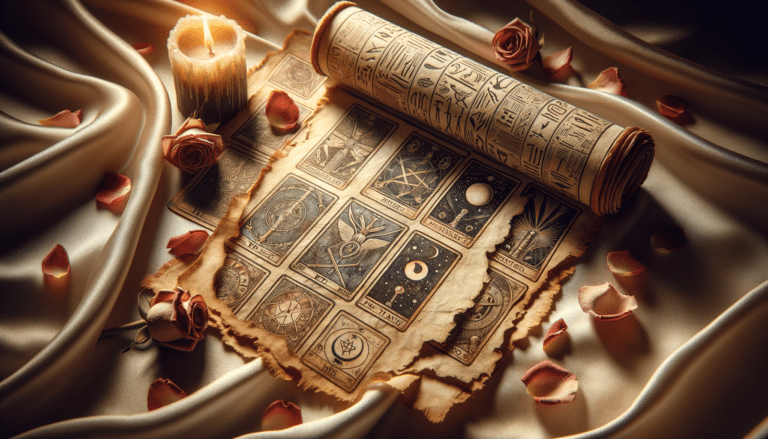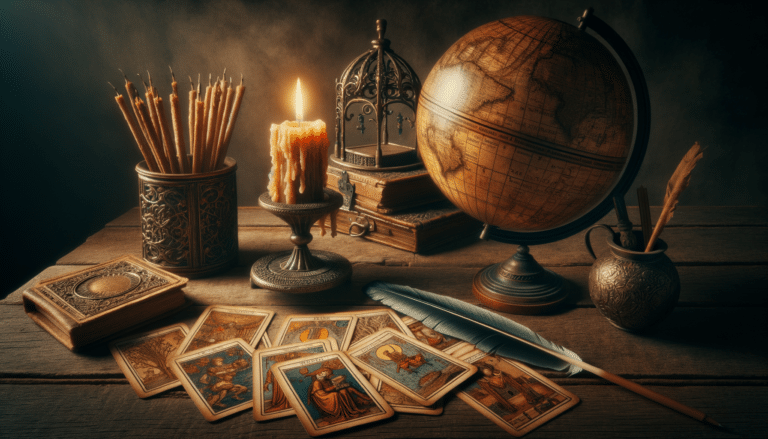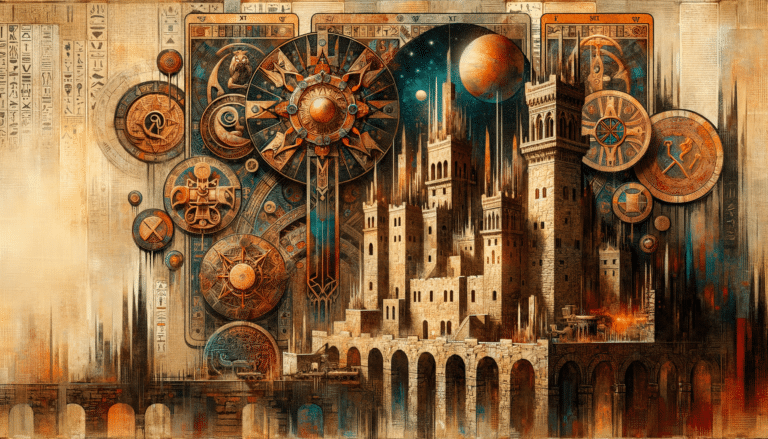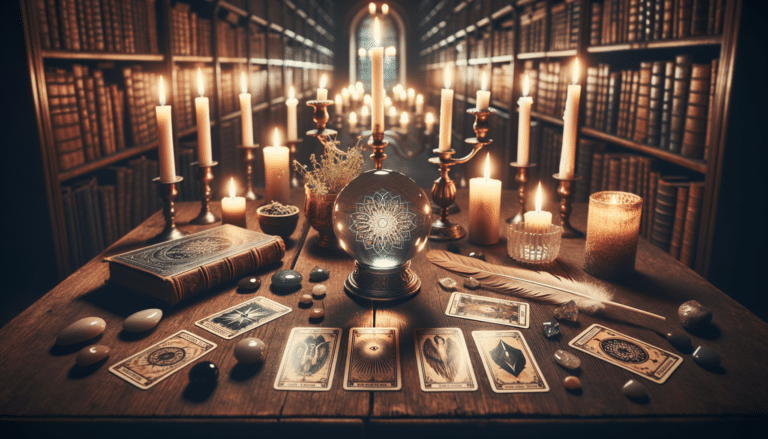Exploring Tarot Card History and Symbolism Origins
As a mosaic of mysteries, tarot cards beckon you into their rich tapestry of history and symbolism. You’ll find their origins shrouded in the mists of the 15th century, initially as playing cards in Europe.
Over time, they evolved into a tool for divination, with the Major and Minor Arcana revealing the full spectrum of human experience. The Renaissance period imbued them with allegorical illustrations, cementing their place in the realm of the mystical.
You won’t just uncover a card’s meaning; you’ll delve into a complex system where each image and symbol speaks volumes about life’s journey.
Today, tarot’s resurgence in popular culture reflects a continued fascination with the insight and reflection they offer. Dive in, and you might just find that tarot cards hold a mirror to your own path.
Key Takeaways
- Tarot cards originated in the 15th century as playing cards in Europe and were influenced by Mamluk cards from Islamic societies.
- Tarot cards evolved from game pieces to tools for divination during the Renaissance period.
- Tarot cards contain symbols that hold multiple meanings and provide insight into the complexities of life and human experience.
- Tarot cards are used in occult traditions for divination, psychic readings, and meditation, and have gained popularity in pop culture through movies, TV shows, fashion, and music.
Origins of Tarot Cards

Your fascination with the enigma of tarot cards begins in the 15th century, where their inception as playing cards in Europe marks the genesis of a complex tradition steeped in artistry and mystique. Initially, these cards weren’t the fortune-telling symbols you might be familiar with today; they were used for card games, quite similar to the modern deck you might use for a game of bridge or poker.
The tarot’s origins are a tapestry woven with threads of various cultures. There’s significant Mamluk influence, as European card games owe a debt to the Islamic societies that had mastered the art of card making. The Mamluk cards didn’t depict human figures, adhering to religious norms, but they were ornate and intricate. When the concept reached European shores, particularly Italy and France, artists began to infuse the cards with their own cultural imagery, which often included representations of people, allegories, and symbols that reflected their society’s values and beliefs.
As you delve deeper into tarot’s history, you’ll find that every card holds a story, a piece of the past, and a mirror to the human psyche. Their transformation from game pieces to mystical tools is a journey through time, culture, and the collective unconscious.
Evolution Through Centuries
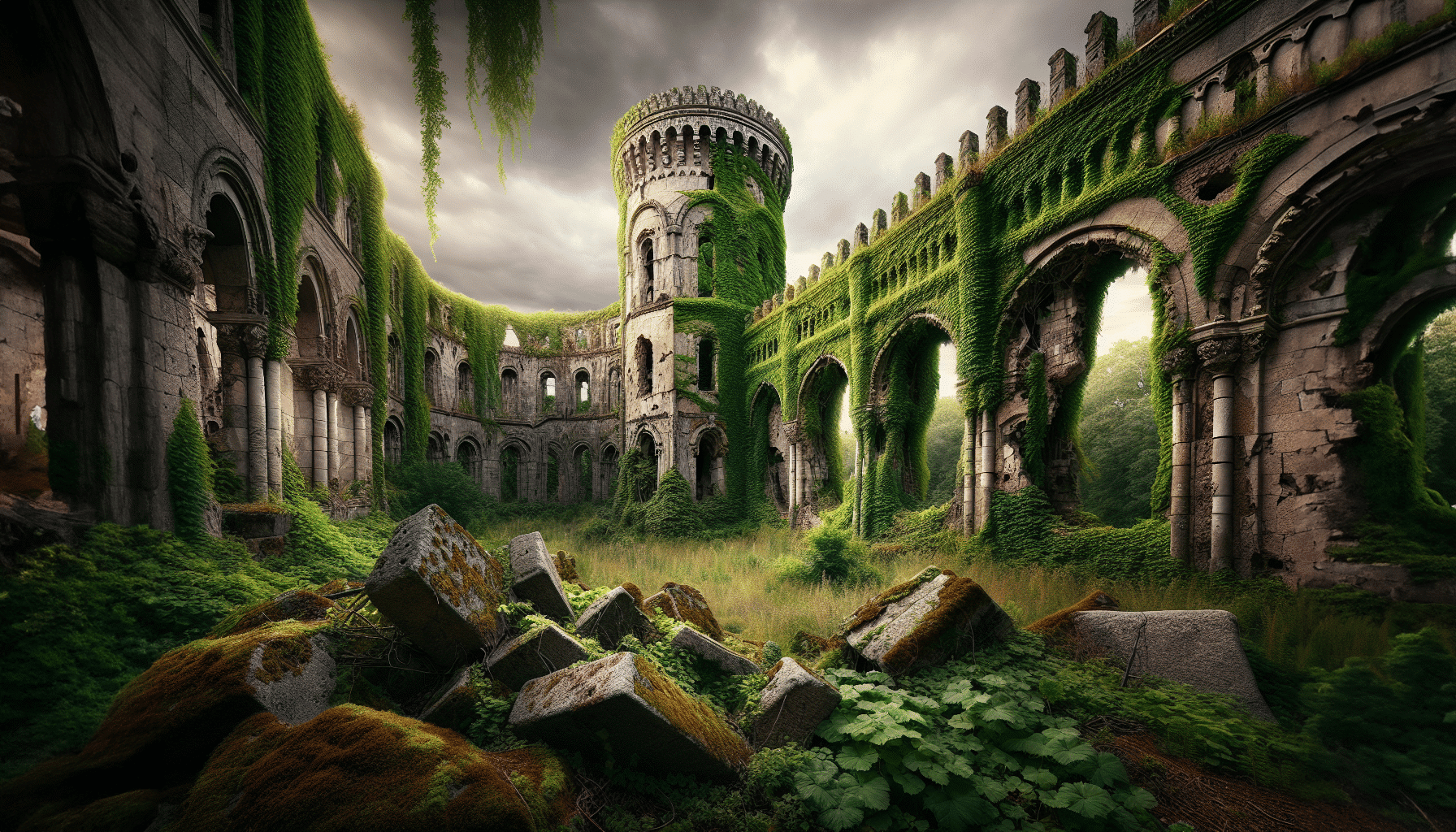
As you trace the tarot’s journey, you’ll find its roots deeply embedded in the Renaissance, a period brimming with artistic and symbolic flourish.
Over time, these cards have transcended their initial purpose, evolving into tools for modern symbolic interpretation.
You’re now witnessing a centuries-old evolution, from simple playing cards to profound instruments of insight.
Origin in Renaissance
During the Renaissance, you’ll find that tarot cards emerged as a form of entertainment among the upper classes, beginning their evolution into the richly symbolic tools we recognize today.
Initially, they weren’t mystical oracles, but rather, part of card games enjoyed by the Italian nobility. These games were a pastime of leisure, showcasing artistic decks that often featured elaborate designs and were sometimes lavishly painted by hand.
As time progressed, the imagery on the cards took on deeper meanings. Though it’s hard to pinpoint exactly when tarot transitioned from courtly entertainment to a tool for divination, the rich symbols embedded in the artwork provided a fertile ground for allegorical interpretation and mystical speculation, laying the groundwork for the tarot’s enduring legacy.
Modern Symbolic Interpretations
The transformation of tarot cards over the centuries has seen them become a profound vessel for symbolism and personal reflection. You’ll find that each deck brims with card archetypes, embodying universal themes and human experiences such as love, conflict, and triumph. As you delve into the cards, you’re engaging with a visual language that has evolved to resonate deeply with our subconscious.
In modern times, tarot has transcended its origins to become a tool for intuitive readings. You’re not just predicting the future; you’re exploring potential pathways and the hidden aspects of your psyche. These readings can offer clarity, highlighting underlying patterns and offering fresh perspectives.
With every card you draw, you’re invited to interpret its symbolism in a way that’s meaningful to you, reinforcing tarot’s role as a mirror to the soul.
Check out our Tarot Decks here…
Major and Minor Arcana

You’ll find that a traditional tarot deck comprises 78 cards, divided into two distinct sections: the Major Arcana, consisting of 22 cards, and the Minor Arcana, made up of 56 cards.
The Major Arcana are often considered the heart of a tarot deck, featuring archetypes and grand themes that can shape the narrative of your reading. Each card within the Major Arcana holds significant symbolism and is pivotal in card interpretations. They often represent life’s spiritual lessons and highlight various aspects of your personal journey.
The Minor Arcana, on the other hand, resemble the modern deck of playing cards with four suits. However, in tarot, these suits are typically cups, wands, swords, and pentacles, each relating to a specific aspect of human experience. The suits in the Minor Arcana deal with the day-to-day events and details, giving context and nuance to the broader themes presented in the Major Arcana.
Deck designs can vary widely, with each artist infusing their interpretation into the symbolism of the cards. This creative freedom means that no two tarot decks are the same, and the imagery can greatly influence how you connect with the cards’ meanings.
Whether you’re seeking personal insight or exploring mystical traditions, understanding the Major and Minor Arcana is essential in grasping tarot’s rich tapestry.
Learn more with these best tarot books here…
Renaissance Influence
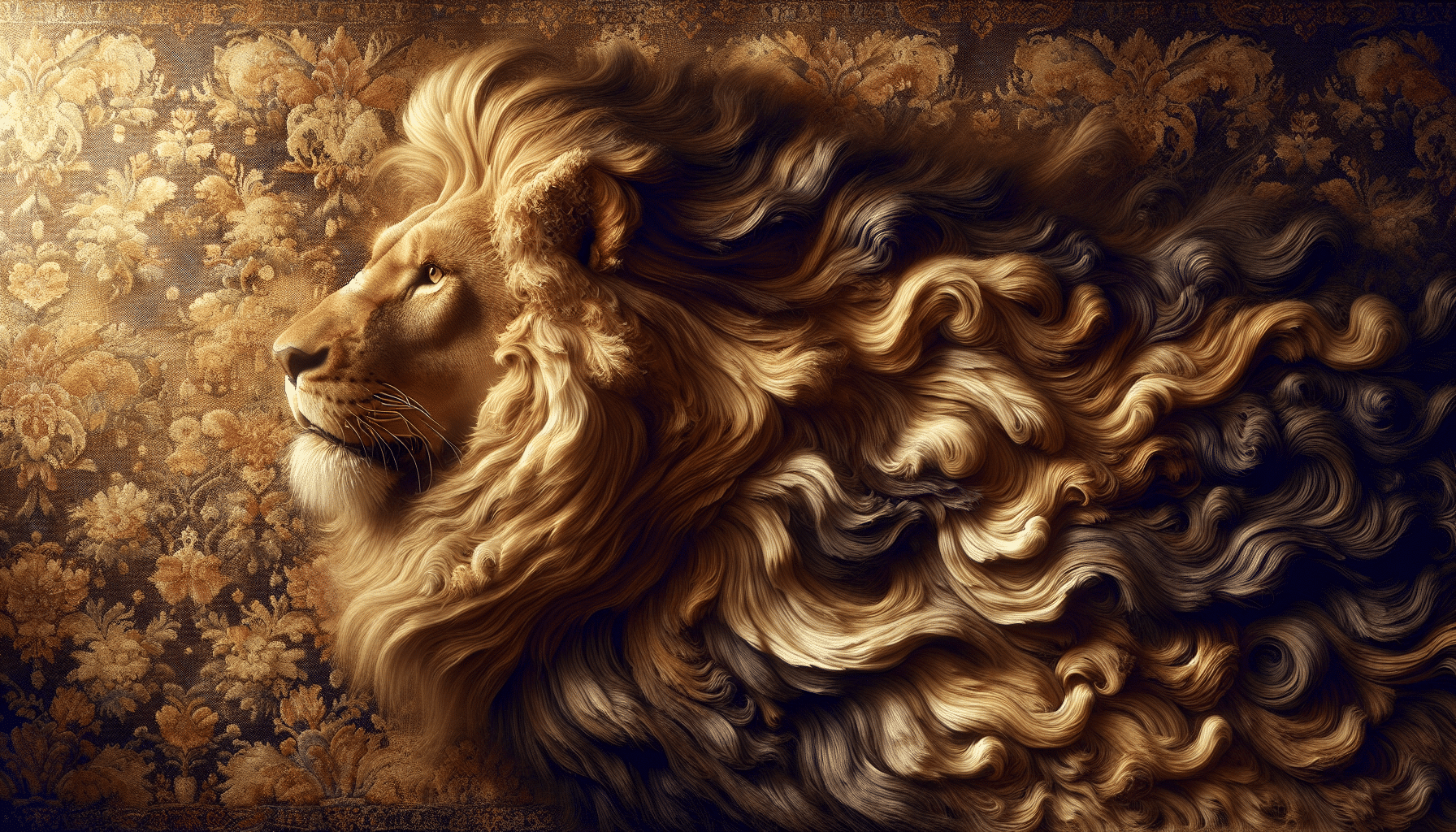
Often, you’ll encounter the profound impact of Renaissance symbolism and philosophy woven into the tapestry of tarot cards. During the Renaissance, a period marked by a revival of arts and culture, tarot cards emerged not just as mystical tools but also as a form of courtly games. These games were more than mere pastimes; they often reflected the social and philosophical currents of the time.
Renaissance artistry is particularly evident in the imagery of the tarot. The cards bear witness to the era’s aesthetic values, with each illustration rich in allegory and classical motifs. Artists of the time were deeply engaged with concepts of humanism, and this is mirrored in the human-centric imagery of the tarot. The figures on the cards are depicted with an attention to emotion and detail that was characteristic of Renaissance portraiture.
Moreover, tarot imagery often includes symbols of power, knowledge, and the natural world. These elements were highly regarded during the Renaissance and played a significant role in shaping the period’s worldview. When you’re studying tarot cards, you’re not just looking at pictures; you’re seeing through a window into the collective consciousness of an era that placed great value on art, symbolism, and the pursuit of wisdom.
Learn even more secrets of history of tarot cards here…
Tarot in Occult Traditions

Many occult traditions have incorporated tarot cards into their practices, recognizing their symbolic potency and potential for divination. As you delve deeper into the world of the tarot, you’ll find that it’s not just a deck of cards but a tool that has been honed by the mystic arts for centuries.
Here are a few ways tarot is used in occult practices:
-
Divination methods: Tarot readings are a form of divination, providing insight into the past, present, and possible futures. Each card’s imagery and symbolism are interpreted to answer questions or convey messages from the spiritual realm.
-
Psychic readings: Tarot cards can serve as a medium for psychic readings, where readers claim to connect with the energy or aura of the person receiving the reading, providing guidance and revealing hidden truths.
-
Meditative focus: Beyond divination, tarot cards can be used as focal points during meditation to explore one’s subconscious, facilitating personal growth and self-reflection.
If you’re curious about tapping into your own intuitive powers, or simply wish to gain a deeper understanding of the symbolism behind each card, exploring tarot within these traditions can be an illuminating experience. Remember, it’s not just about predicting the future; it’s about unlocking the mysteries of your mind and the universe around you.
Symbolic Meanings Explained
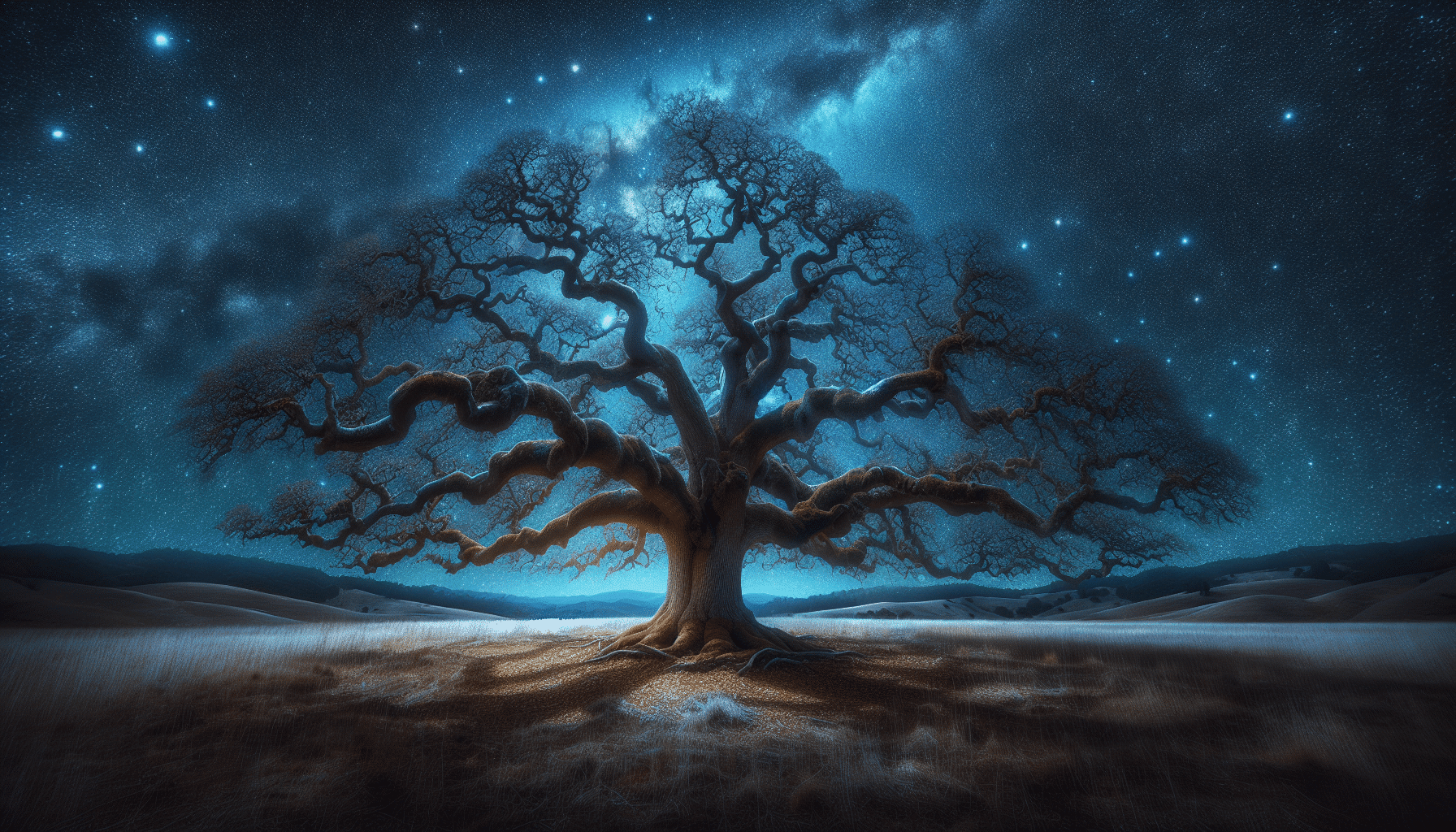
Within the intricate artwork of tarot cards, you’ll find symbols that hold a multitude of meanings, each providing insight into the complexities of life and human experience. These symbols aren’t just random; they’re steeped in historical significance and are essential for anyone looking to delve into the world of tarot.
The tarot deck is divided into two main sections: the Major Arcana and the Minor Arcana. The Major Arcana cards, like The Fool or The Lovers, depict significant life events and lessons. They’re the heavy hitters of the deck, rich in archetypal imagery. When these cards appear in a reading, they signal major influences and changes.
The Minor Arcana, on the other hand, consists of four card suits – Cups, Swords, Wands, and Pentacles. Each suit corresponds to a specific aspect of human experience: emotions (Cups), intellect (Swords), creativity (Wands), and material world (Pentacles). The cards within these suits reflect the day-to-day happenings and the smaller decisions you face.
Divination debates often circle around tarot’s efficacy and the interpretation of these symbols. While some view tarot as a tool for spiritual guidance, others see it as a way to tap into the subconscious. Regardless of where you stand, the symbolic meanings within tarot cards offer a unique lens through which to view life’s challenges and opportunities.
Tarot’s Modern Resurgence

You’ve likely noticed tarot’s comeback in movies and TV shows, a sign of pop culture’s embrace of mystical themes.
It’s not just physical cards anymore; digital tarot apps have brought readings to your smartphone, blending ancient practice with modern tech.
This revival intertwines with a surge in contemporary spirituality, as more people are seeking personal growth and self-reflection through these age-old symbols.
Pop Culture Influence
In the realm of pop culture, tarot cards have experienced a remarkable resurgence, becoming a prevalent motif in movies, television, and online communities. This enchanting deck of cards isn’t just for readings; it’s infiltrated various aspects of lifestyle and entertainment, sparking a trend that’s hard to ignore.
You’ve likely seen tarot’s influence in:
-
Tarot themed fashion with designers incorporating mystical imagery into clothing and accessories.
-
Tarot inspired music, where artists use the rich symbolism of the cards to craft songs and visuals.
-
Social media platforms featuring tarot card readings and educational content that demystifies their usage and history.
These elements have contributed to tarot’s modern popularity, making it more than just a tool for divination – it’s a cultural phenomenon.
Digital Tarot Apps
One can’t overlook the impact of digital tarot apps in the resurgence of tarot’s popularity, offering an accessible way for you to explore readings and the rich symbolism of the cards right from your smartphone. Virtual readings have bridged the gap between ancient practice and modern convenience, allowing you to delve into the world of tarot wherever you are.
With app personalization, your tarot experience becomes uniquely yours. These apps not only interpret the cards but also track your readings over time, helping you reflect on past insights and patterns. Here’s a snapshot of what digital tarot apps offer:
| Feature | Description |
|---|---|
| Daily Card Readings | A new insight with each day |
| Personalized Insights | Tailored readings based on your profile |
| Learning Resources | Guides to understand card meanings |
Embrace the digital age and see what the cards have in store for you.
Contemporary Spirituality Trends
Amidst the surge of interest in self-discovery and mindfulness, you’ll find tarot’s resurgence woven into contemporary spirituality trends, reflecting a society eager to find meaning in both the mystical and the everyday.
As you delve into tarot, you’re engaging with a tool that complements:
- Mindfulness practices that encourage living in the present moment.
- Energy work aimed at understanding and balancing life forces.
- Personal growth workshops where tarot readings contribute to self-awareness.
These cards offer a unique pathway to introspection and, when used in conjunction with mindfulness and energy work, can deepen your insight into your own life.
Just as importantly, they provide a bridge to a community seeking similar understanding, a shared journey of discovery in the tapestry of modern spirituality.
Conclusion
You’ve journeyed through tarot’s rich tapestry, from its medieval birth to modern mystical resurgence. These cards, more than mere playthings of the Renaissance fair, hold symbols that mirror life’s intricate dance.
In each arcana, you find timeless narratives that resonate with your soul’s questions. So, whether you seek introspection or foresight, let the tarot’s ancient wisdom guide you, as it has for seekers since knights jousted under starry skies.
Embrace the mystery.
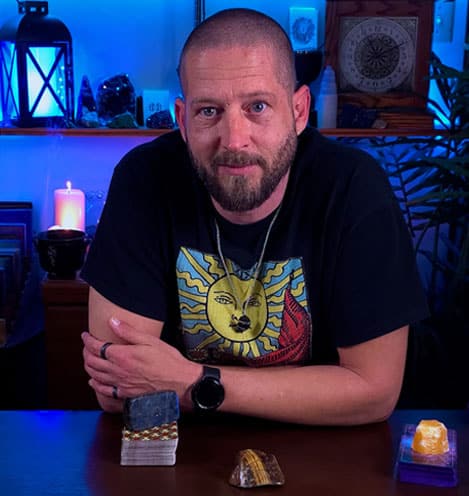
About The Author – Allen Hill
Allen Hill, the force behind Unknown Truth Tarot, has a YouTube following 6-times bigger than the population of his hometown, Miamisburg, Ohio. From his spiritually rich blog on Tarot and crystals to his role as CEO of The Unknown Truth Tarot Metaphysical Shop, Allen’s passion for the metaphysical shines through.
A master Tarot reader and “crystal junkie,” Allen is also a devoted dad to Dylan, 10, and Destiny, 24. When he’s not immersed in the world of Tarot and crystals, he enjoys poker and video gaming sessions, often humorously outplayed by Dylan.
Follow Allen on Twitter, Instagram, Facebook, TikTok, and subscribe to his Unknown Truth Tarot YouTube channel to join him on a journey of spiritual growth and self-discovery.

